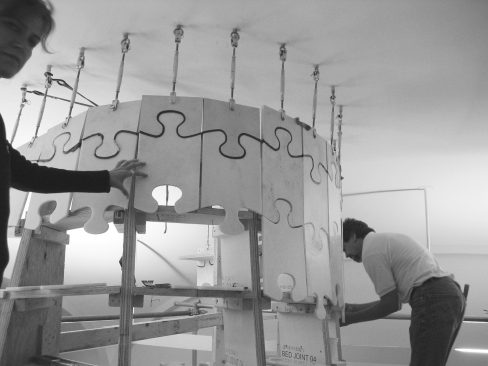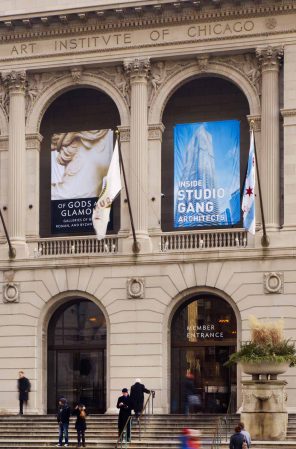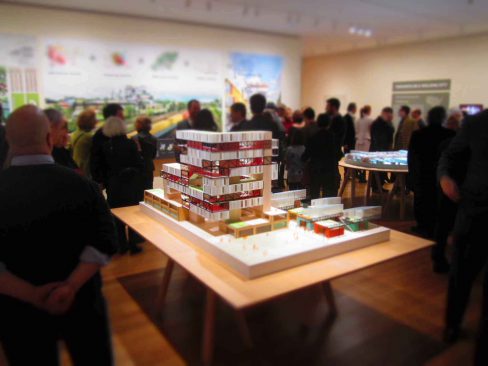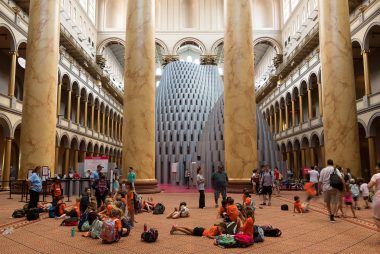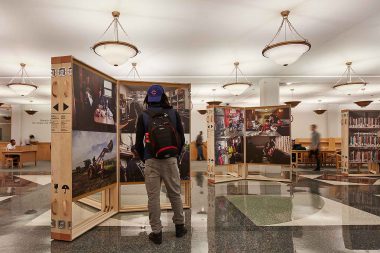Marble Curtain
Location
National Building Museum, Washington, D.C.
On View
October 2003-April 2004
Tags
For the exhibition Masonry Variations, Studio Gang explored stone’s structural capacity, challenging conventional thinking about stone and surprising even long-time industry veterans.
It is widely believed that stone performs best when subjected to compressive loads. Prior to the Marble Curtain, however, no technical data existed for stone’s strength in tension. Invited to participate in the exhibition by curator Stanley Tigerman, Studio Gang chose to explore stone’s structural capacity by hanging it in tension from the museum’s vaulted ceiling.
Through structural investigations with engineers including Joseph Burns and Faz Ehsan of Thornton Tomasetti and Peter Heppel, we found that by linking the pieces of stone together in a series of jigsaw-like chains, the Marble Curtain could hang without any skeletal support or frame. Water-jet cutting allowed for intricate, puzzle-shaped cuts. For structural redundancy, each piece was laminated with a fiber-resin backing.
The floor of the National Building Museum can support little additional weight, but its ceiling is constructed of a strong masonry vault. This early concept sketch shows the stone curtain hanging from the ceiling.
When completed, the Marble Curtain was 18 feet tall, made of 620 pieces of stone, and weighed just 1,500 pounds.
About the Exhibition
Marble Curtain was presented in the exhibition Masonry Variations at the National Building Museum in Washington, DC. The exhibition, which was on view from October 2003 to April 2004, sought to open the door to the future of masonry with four contemporary installations that imagine the potential of this 5,000-year-old profession.
Inspired by some of the greatest masonry structures in history and displaying many of the same tools used to construct them, the exhibition illustrated that every great building is the manifestation of architects and builders reckoning with these challenges, pulled by technology, societal and cultural change, and human ingenuity and desire into that great unknown—the future.




